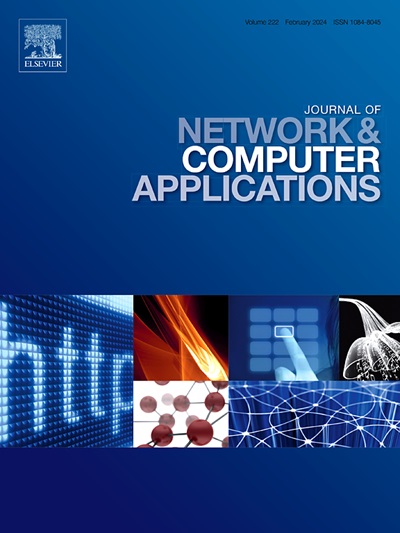4G/5G网络中自适应视频流QoE增强的基于autoformer的移动性和切换感知预测
IF 8
2区 计算机科学
Q1 COMPUTER SCIENCE, HARDWARE & ARCHITECTURE
引用次数: 0
摘要
基于HTTP的动态自适应流(DASH)中的传统自适应比特率(ABR)算法依赖于基本的吞吐量估计技术,通常难以快速适应网络波动。当用户在不同的传输方式之间移动或从一个接入点切换到另一个接入点时(例如,从Wi-Fi到蜂窝网络或在4G/5G蜂窝之间切换),可用带宽可能会发生急剧变化,从而导致中断和突然的质量变化,从而影响传统ABR算法提供无缝回放和保持高体验质量(QoE)的能力。为了解决这些问题,本文引入了一种新颖而全面的框架,显著提高了ABR算法的适应性和智能。提出的解决方案集成了三个关键组件:基于变压器的吞吐量预测模型,移动性感知吞吐量预测引擎(MATH-P)和切换感知吞吐量预测引擎(ath - p)。基于变压器的模型在预测4G和5G网络吞吐量方面优于最先进的方法,利用其捕获复杂时间模式和长期依赖关系的能力。MATH-P引擎根据不同的移动场景调整吞吐量预测,而ath - p引擎通过准确预测4G/5G切换事件并选择适当的吞吐量预测模型来实现无缝过渡。该系统被集成到现有的ABR算法中,取代了传统的吞吐量估计技术。实验结果表明,MATH-P和ath - p引擎显著提高了视频流性能,减少了失速持续时间,提高了视频质量,并确保了更流畅的播放。本文章由计算机程序翻译,如有差异,请以英文原文为准。
Autoformer-based mobility and handoff-aware prediction for QoE enhancement in adaptive video streaming in 4G/5G networks
Traditional Adaptive Bitrate (ABR) algorithms in Dynamic Adaptive Streaming over HTTP (DASH) rely on basic throughput estimation techniques that often struggle to quickly adapt to network fluctuations. As users move across different transportation modes or change from one access point to another (e.g., Wi-Fi to cellular networks or between 4G/5G cells), available bandwidth can vary sharply, causing interruptions, abrupt quality shifts, which impact the ability of conventional ABR algorithms to provide seamless playback and maintain high quality-of-experience (QoE). To address these issues, this paper introduces a novel and comprehensive framework that significantly enhances the adaptability and intelligence of ABR algorithms. The proposed solution integrates three key components: a transformer-based throughput prediction model, a Mobility-Aware Throughput Prediction engine (MATH-P), and a Handoff-Aware Throughput Prediction engine (HATH-P). The transformer-based model outperforms state-of-the-art approaches in predicting throughput for both 4G and 5G networks, leveraging its ability to capture complex temporal patterns and long-term dependencies. The MATH-P engine adapts throughput predictions to varying mobility scenarios, while the HATH-P one manages seamless transitions by accurately predicting 4G/5G handoff events and selecting the appropriate throughput prediction model. The proposed systems were integrated into existing ABR algorithms, replacing traditional throughput estimation techniques. Experimental results demonstrate that the MATH-P and HATH-P engines significantly improve video streaming performance, reducing stall durations, enhancing video quality, and ensuring smoother playback.
求助全文
通过发布文献求助,成功后即可免费获取论文全文。
去求助
来源期刊

Journal of Network and Computer Applications
工程技术-计算机:跨学科应用
CiteScore
21.50
自引率
3.40%
发文量
142
审稿时长
37 days
期刊介绍:
The Journal of Network and Computer Applications welcomes research contributions, surveys, and notes in all areas relating to computer networks and applications thereof. Sample topics include new design techniques, interesting or novel applications, components or standards; computer networks with tools such as WWW; emerging standards for internet protocols; Wireless networks; Mobile Computing; emerging computing models such as cloud computing, grid computing; applications of networked systems for remote collaboration and telemedicine, etc. The journal is abstracted and indexed in Scopus, Engineering Index, Web of Science, Science Citation Index Expanded and INSPEC.
 求助内容:
求助内容: 应助结果提醒方式:
应助结果提醒方式:


